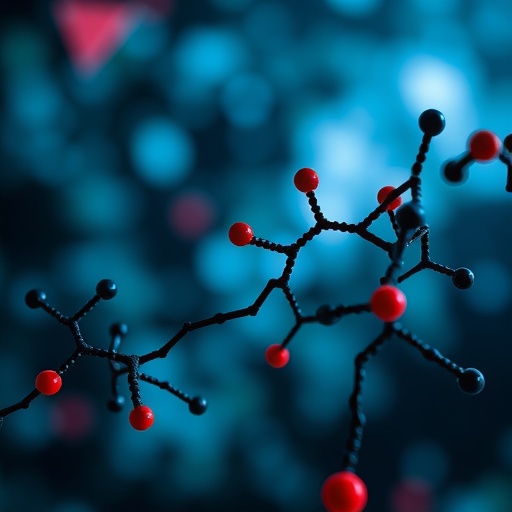Major Depressive Disorder (MDD) remains one of the leading contributors to the global burden of disease, with suicide representing a devastating consequence that underscores the urgent need for improved risk stratification methods. Recent advances in psychiatric research have increasingly highlighted the complexity of suicide risk, suggesting it is a multifactorial phenomenon encompassing hematological, inflammatory, and metabolic dysfunctions. A groundbreaking study published in BMC Psychiatry in 2025 has embarked on an ambitious effort to integrate these diverse biological pathways, moving beyond isolated markers to develop a comprehensive multi-system biomarker model for predicting suicide risk in patients diagnosed with MDD.
This cross-sectional investigation recruited 357 individuals formally diagnosed with MDD according to DSM-5 criteria, carefully excluding those with confounding acute infections, autoimmune disorders, immunomodulatory treatments, or malignancies to better isolate psychiatric-specific biomarkers. Blood samples collected in a fasting state were meticulously analyzed for erythroid parameters such as red blood cell (RBC) counts, a spectrum of composite inflammatory indices including the pan-immune-inflammation value (PIV), and metabolic dysregulation markers using the triglyceride glucose (TyG) index. The TyG index, calculated via the natural logarithm of triglyceride and fasting blood glucose products, served as a critical metabolic mediator within the analysis. In addition, thyroid hormone profiling further nuanced the biochemical characterization of these patients.
Suicide risk classification was rigorously conducted through structured clinical interviews, stratifying participants into three delineated groups: those without suicidal ideation (non-SI), individuals experiencing suicidal ideation without attempts (SI), and patients with a documented history of suicide attempt (SA). This stratification allowed the researchers to discern biological gradations correlating with increased clinical severity and suicidality in the depressive cohort, highlighting the interplay of physiological dysregulation with psychiatric manifestations.
Remarkably, patients exhibiting suicidal ideation or attempts demonstrated several distinctive features compared to non-suicidal counterparts. Statistically significant elevations in red blood cell counts and log-transformed PIV were observed, indicating a heightened inflammatory milieu potentially driving neuropsychiatric vulnerability. Concurrently, this subgroup showed a paradoxically lower TyG index and fasting glucose levels, suggesting complex metabolic alterations that diverge from traditional models of depression-associated insulin resistance or metabolic syndrome.
Sociodemographic variations also emerged, with suicidal patients more frequently unmarried and having higher education levels, which challenges conventional assumptions but may point toward underlying social isolation or psychosocial stressors contributing to suicide risk. Moreover, a higher prevalence of mood stabilizer usage was noted within the suicidal groups, indicating either more complex clinical presentations or medication-related influences on physiological markers.
Advanced statistical modeling through binary logistic regression identified the logPIV and mood stabilizer use as potent risk factors for suicidality, with odds ratios implying over twofold and nearly fourfold increased risks, respectively. Conversely, marriage emerged as a significant protective factor, underscoring the buffering effect of social support in mitigating suicide risk among depressed individuals. These findings resonate with an integrative biopsychosocial framework where biological and environmental variables converge.
Ordinal regression analyses corroborated these trends, demonstrating that prolonged illness duration, elevated inflammatory burden, and more pharmacologically complex conditions collectively heightened suicide risk across the spectrum from ideation to attempt. Such multi-dimensional predictors offer clinicians valuable tools for early identification of high-risk patients, potentially facilitating timely intervention strategies tailored to individual biological and psychosocial profiles.
The study’s combined biomarker panel yielded impressive discriminatory power, with area under the curve (AUC) metrics reaching up to 0.85 when contrasting non-suicidal patients with those who attempted suicide, indicating excellent sensitivity and specificity. This integrated approach, leveraging both hematologic and metabolic indices alongside key clinical variables, exemplifies the next frontier of precision psychiatry.
Of particular interest is the role of the pan-immune-inflammation value (PIV), a composite metric reflecting systemic immune activation, which has garnered attention in recent neuropsychiatric investigations. Its elevation in suicidal depressed patients may implicate neuroinflammatory pathways as pivotal mechanisms in suicidogenesis, aligning with growing evidence for immune dysregulation’s role in mood disorders and suicidal behavior.
Simultaneously, metabolic dysfunction, as indexed by the TyG marker and altered thyroid hormone profiles—especially reduced thyroxine levels—adds a hormonal dimension to the pathophysiology of suicide risk in MDD. It suggests that bioenergetic failure, impaired glucose homeostasis, and endocrine imbalances might synergize with inflammation to exacerbate neuropsychiatric vulnerability.
Crucially, this study demonstrates the feasibility and clinical relevance of a multi-system biomarker paradigm that transcends traditional mono-dimensional models. By integrating erythroid and immune-inflammatory parameters with metabolic and hormonal indices, the research paves the way for holistic diagnostic frameworks that capture the intricate biological substrates underpinning suicide risk in depression.
The implications for clinical practice are profound, suggesting that routine laboratory tests could serve as adjunctive tools for suicide risk assessment, enabling psychiatrists to stratify patients based on objective biological markers in addition to psychological evaluation. This integrative strategy holds promise for enhancing preventative efforts, optimizing pharmacotherapy choices, and ultimately reducing the tragic toll of suicide associated with major depressive disorder.
As awareness of complex biomarker interplay grows, future research should endeavor to validate and refine these findings across diverse populations, incorporate longitudinal designs to elucidate temporal biomarker fluctuations, and explore potential interventions targeting inflammatory and metabolic pathways. Interdisciplinary collaboration between psychiatry, immunology, and endocrinology will be paramount in translating this knowledge into tangible clinical advancements.
In summary, the pioneering study in BMC Psychiatry marks a significant leap toward multi-system understanding and management of suicide risk in MDD. Its comprehensive biomarker integration charts a promising avenue for early detection and intervention, reaffirming the imperative to address depression not only as a psychological phenomenon but as a multifactorial systemic disorder with measurable biological signatures.
Subject of Research:
Investigation of integrated erythroid parameters, composite inflammatory indices, and metabolic dysregulation as multi-system biomarkers for suicide risk stratification in Major Depressive Disorder (MDD).
Article Title:
Multi-system biomarkers of suicide risk in major depressive disorder: integrating erythroid parameters, composite inflammatory indices, and metabolic dysregulation
Article References:
Fu, Z., Jiang, J., Gao, L. et al. Multi-system biomarkers of suicide risk in major depressive disorder: integrating erythroid parameters, composite inflammatory indices, and metabolic dysregulation. BMC Psychiatry (2025). https://doi.org/10.1186/s12888-025-07616-3
Image Credits: AI Generated




